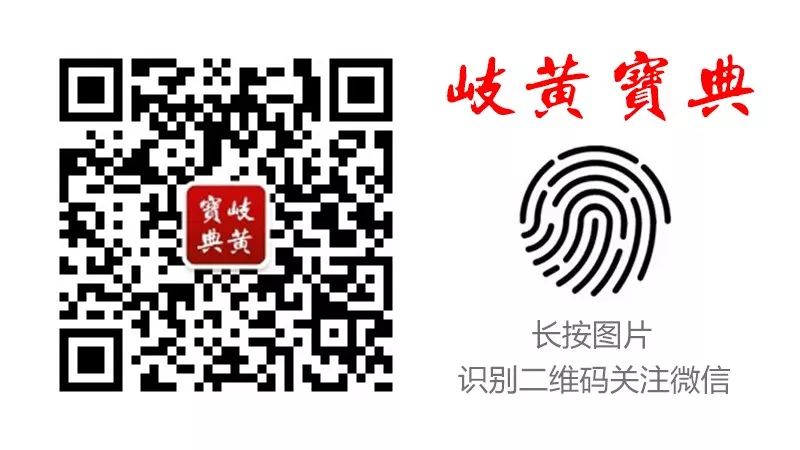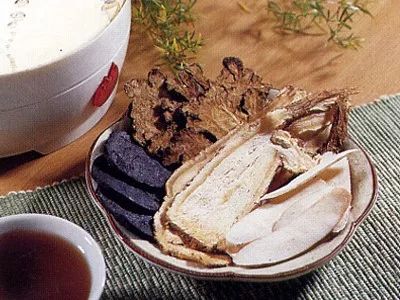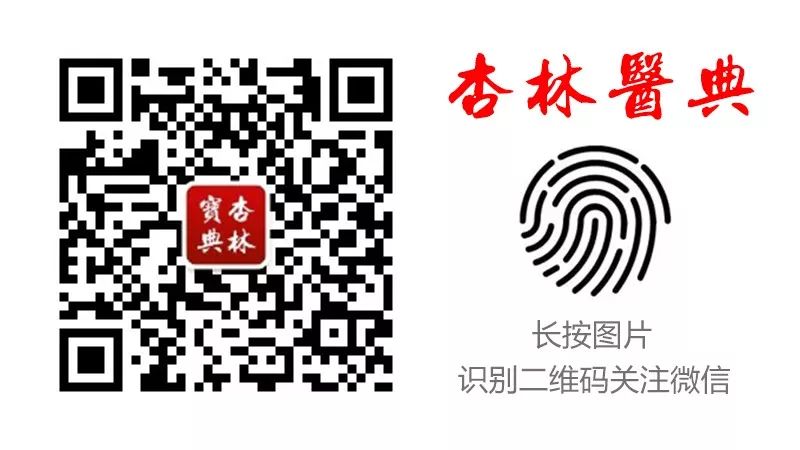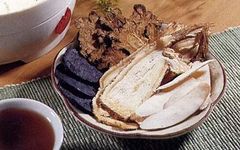

Comprehensive TCM Classics >>>【TCM Treasure】 Mobile App: Free Download + Free Use

Introduction
|
If you see someone with a pale complexion, experiencing palpitations and confusion, they may be suffering from 血虚 (xue xu) (blood deficiency). In Traditional Chinese Medicine (TCM), there are various formulas tailored to different symptoms. This article extracts 7 commonly used blood-nourishing formulas from the study of 方剂学 (fang ji xue) (Formulary Studies) for your learning and reference. |
All formulas that combine herbs to nourish and replenish blood for treating blood deficiency are collectively referred to as 补血剂 (bu xue ji) (blood nourishing agents).
These formulas are suitable for symptoms such as dizziness, blurred vision, pale complexion; pale lips, brittle nails; palpitations, insomnia; dry stools; women with irregular menstrual cycles, light flow, and pale color; thin and rapid pulse or thin and rough pulse, pale red tongue, slippery and scanty coating, etc.
These formulas often include ingredients such as 熟地 (Shu Di Huang) (Rehmannia Glutinosa), 当归 (Dang Gui) (Angelica Sinensis), 白芍 (Bai Shao) (White Peony), 阿胶 (Ejiao) (Donkey-hide Gelatin), with representative formulas like 四物汤 (Si Wu Tang) (Four Substance Decoction), 归脾汤 (Gui Pi Tang) (Restore the Spleen Decoction), 当归补血汤 (Dang Gui Bu Xue Tang) (Dang Gui Blood Nourishing Decoction), etc.

1、四物汤 (Si Wu Tang)
【Source】
《太平惠民和剂局方 (Tai Ping Hui Min He Ji Ju Fang)》
【Ingredients】
当归去芦,酒浸炒 (10g)
川芎 (8g)
白芍 (12g)
熟干地黄酒洒蒸 (12g) (熟地黄已有成品,干地黄,即生地黄晒干,用)
【Usage】
Grind into coarse powder, take three qian (approximately 9g), boil with one and a half cups of water until reduced to eight parts, strain and take warm on an empty stomach before meals.
If there is instability during pregnancy with bleeding, add 艾叶 (Ai Ye) (Mugwort) and 阿胶 (Ejiao) (Donkey-hide Gelatin) and decoct as before.
Or if there is cold in the blood and excessive bleeding, also add 阿胶 (Ejiao) and 艾叶 (Ai Ye) for decoction.
【Function】 Nourishes and regulates blood.
【Indications】
Deficiency of the Chong and Ren vessels. Irregular menstruation, abdominal pain, excessive bleeding. Blood stasis with hard masses, intermittent pain. Instability during pregnancy with bleeding, postpartum lochia not expelling, formation of masses, lower abdominal pain, intermittent cold and heat.
【Analysis】
This formula is the primary formula for nourishing blood and regulating menstruation. It is derived from 《金匮要略 (Jin Gui Yao Lue)》 – 妇人妊娠篇 (Fu Ren Ren Sheng Pian) (Women’s Pregnancy Chapter) by removing 阿胶 (Ejiao), 艾叶 (Ai Ye), and 甘草 (Gan Cao) (Licorice).
It serves as a foundation for various blood deficiency syndromes, adjusted according to symptoms.
Chong refers to the blood sea, and Ren governs the uterus. If the Chong vessel is deficient, women may experience light menstrual flow, pale color, and delayed periods. If there is cold stagnation in the lower jiao, abdominal pain may occur. If the spleen is deficient and cannot hold blood, or if the kidney is deficient and the Chong and Ren are unstable, symptoms such as excessive bleeding may follow. Additionally, if there is liver cold and blood stagnation, blood flow may be obstructed, leading to hard masses and pain around the lower abdomen and navel.
This formula uses 当归 (Dang Gui) to nourish and invigorate blood; 熟地 (Shu Di Huang) primarily nourishes blood; 川芎 (Chuan Xiong) regulates the qi in the blood; and 白芍 (Bai Shao) nourishes blood and astringes yin. Thus, the entire formula is categorized as a blood formula. However, the combination is appropriate, nourishing blood without stagnation, invigorating blood without damaging it, balancing nourishment and dispersal, forming a key blood treatment formula.
【Modifications】
① If there is cold in the blood with abdominal pain during menstruation, consider adding 炮姜 (Pao Jiang) (Dried Ginger), 桂枝 (Gui Zhi) (Cinnamon Twig), 吴萸 (Wu Yu) (Evodia), 枳壳 (Zhi Qiao) (Bitter Orange), 香附 (Xiang Fu) (Cyperus), 桑寄生 (Sang Ji Sheng) (Mulberry Mistletoe), and 续断 (Xu Duan) (Dipsacus) to warm the cold, regulate qi, invigorate blood, and relieve pain.
② If there is instability during pregnancy, consider adding 阿胶 (Ejiao), 酒炒艾叶 (Jiu Chao Ai Ye), and 炙甘草 (Zhi Gan Cao) to create 芎归胶艾汤 (Xiong Gui Jiao Ai Tang).
③ If there is blood stasis, consider adding 丹参 (Dan Shen) (Salvia), 桃仁 (Tao Ren) (Peach Kernel), and 红花 (Hong Hua) (Carthamus) to promote blood flow and eliminate stasis.
④ If there is blood deficiency with heat, consider adding 黄芩 (Huang Qin) (Scutellaria) and 丹皮 (Dan Pi) (Moutan Peony Bark).
⑤ If there is qi deficiency with inability to hold blood, consider adding 潞党参 (Lu Dang Shen) (Codonopsis) and 黄芪 (Huang Qi) (Astragalus) and 白术 (Bai Zhu) (Atractylodes).
In summary, this formula can be adjusted according to symptoms to govern various blood conditions.
2、圣愈汤 (Sheng Yu Tang)
【Source】
《医宗金鉴 (Yi Zong Jin Jian)》
【Ingredients】
熟地七钱五分 (20g)
白芍酒拌,七钱五分 (15g)
川芎七钱五分 (8g)
人参七钱五分 (一般用潞党参) (20g)
当归酒洗,五钱 (15g)
黄芪五钱,炙 (18g)
【Usage】 Decoction with water.
【Function】 Tonifies qi, nourishes blood, and stabilizes blood.
【Indications】
Menstruation arrives early, with heavy and pale flow, fatigue in the limbs, and general weakness. This syndrome is due to qi and blood deficiency, leading to an inability to stabilize blood, hence the addition of 四物汤 (Si Wu Tang) to nourish blood and regulate it, along with 人参 (Ren Shen) (Ginseng) and 黄芪 (Huang Qi) to tonify qi and stabilize blood.
3、桃红四物汤 (Tao Hong Si Wu Tang)
【Source】《医宗金鉴 (Yi Zong Jin Jian)》
【Ingredients】
熟地黄二钱 (15g)
川芎一钱 (8g)
白芍二钱,炒 (10g)
当归二钱 (12g)
桃仁 (6g)
红花 (4g)
【Usage】 Decoction, taken three times a day, completed within one day.
【Function】 Nourishes blood, invigorates blood, and eliminates stasis.
【Indications】 Women with early menstruation, heavy flow, purple and sticky quality, or with clots, abdominal pain, and distension.
【Analysis】 This formula combines the blood-nourishing properties of 四物 (Si Wu) with 桃 (Tao Ren) (Peach Kernel) and 红花 (Hong Hua) (Carthamus) to invigorate blood and eliminate stasis. When blood flows smoothly, menstrual pain and distension will subside. However, this formula is strong in its action to invigorate blood and eliminate stasis, so it should be taken only until symptoms improve, as excessive use may lead to bleeding or excessive menstrual flow.
4、当归补血汤 (Dang Gui Bu Xue Tang)
【Source】《内外伤辨惑论 (Nei Wai Shang Bian Huo Lun)》
【Ingredients】
黄芪一两 (30g)
当归二钱,洒洗 (6g)
【Usage】
Grind into a single dose, decoct until one cup remains, strain and take warm on an empty stomach (modern usage: decoct three times, taken on an empty stomach in the morning, noon, and evening).
(Editor’s note: 㕮咀 (fu ju) is a TCM term referring to the method of crushing herbs with the mouth before decocting, followed by slicing, grinding, or pulverizing with other tools, but still retains this name.)
【Function】 Tonifies qi and generates blood.
【Indications】 Fatigue from internal injury, qi weakness, blood deficiency, floating yang. Symptoms include heat in the muscles, red face, thirst, large and weak pulse, as well as women with menstrual issues and postpartum blood deficiency with fever and headache. Also applicable for non-healing sores after ulceration.
【Analysis】 This formula addresses symptoms caused by internal injury from overwork, leading to insufficient vital energy and blood deficiency, resulting in floating yang. Symptoms include heat in the muscles, red face, thirst, and a large but weak pulse. Therefore, it uses a formula to tonify qi and generate blood.
Since tangible blood is generated from intangible qi, this formula emphasizes the use of 黄芪 (Huang Qi) to greatly tonify the qi of the spleen and lungs, thus enriching the source of blood; it also uses 当归 (Dang Gui) to nourish blood and harmonize the nutrients, allowing yang to generate yin and qi to promote blood generation.
As noted by Wu He Gao, “Tangible blood cannot generate itself; it is produced from intangible qi” (from 《名医方论 (Ming Yi Fang Lun)》), which serves as the theoretical basis for this formula’s treatment of the root cause.
For women with menstrual issues, postpartum blood deficiency, fever, and headache, this formula is used to tonify qi and nourish blood while reducing fever. For non-healing sores after ulceration, this formula can also be used to nourish qi and blood, promoting tissue regeneration and healing.
Distinguishing from the 白虎汤 (Bai Hu Tang) syndrome
The symptoms of this formula are somewhat similar to those of 白虎汤 (Bai Hu Tang), such as a large pulse, thirst, fever, and red face, but careful examination reveals strict differences. In 白虎 (Bai Hu) syndrome, the pulse is large and full, with great thirst and a preference for cold drinks, and the body is hot with profuse sweating, which are the four major characteristics of 白虎 (Bai Hu) syndrome. In contrast, the pulse in 当归补血 (Dang Gui Bu Xue) syndrome is large but weak, with thirst and a preference for warm drinks, and the body is warm but not excessively hot, without profuse sweating.
Therefore, when using this formula, it is essential to distinguish between the two aspects of 阳明热盛 (Yangming Re Sheng) (excess heat) and 气弱血虚 (Qi Ruo Xue Xu) (qi weakness and blood deficiency). If the diagnosis is unclear, using this formula may not only be ineffective but may also lead to adverse effects of “虚虚” (false deficiency) or “实实” (false excess).
5、归脾汤 (Gui Pi Tang)
【Source】《济生方 (Ji Sheng Fang)》
【Ingredients】
白术一两 (30g)
茯神去木,一两 (30g)
黄芪去芦,一两 (30g)
龙眼肉一两 (30g)
酸枣仁炒,去壳一两 (30g)
人参半两 (15g)
木香不见火,半两 (15g)
甘草炙,二钱半 (8g)
当归一钱 (3g)
远志蜜炙,一钱 (3g)
(当归 (Dang Gui) and 远志 (Yuan Zhi) are added from 《校注妇人良方 (Xiao Zhu Fu Ren Liang Fang)》)
【Usage】
Grind into powder, take four qian (approximately 12g), boil with one and a half cups of water, add five slices of ginger and one jujube, decoct until reduced to seven parts, strain and take warm, without time restrictions.
(Modern usage: add ginger (6g) and red dates (3-5 pieces), decoct and take. Alternatively, adjust the dosage ratio to make honey pills, each pill weighing about 15g, taken on an empty stomach, three times a day.)
【Function】 Tonifies qi, nourishes blood, and strengthens the heart.
【Indications】
(1) Heart and spleen deficiency. Excessive thinking and overwork injure the heart and spleen, leading to insufficient qi and blood. Symptoms include palpitations, forgetfulness, insomnia, night sweats, heat, fatigue, pale complexion, pale tongue, thin white coating, and weak pulse.
(2) Spleen not governing blood. Symptoms include blood in stools, excessive menstrual flow, or prolonged menstrual bleeding, or continuous discharge.
【Analysis】
This formula primarily treats heart and spleen deficiency. The heart houses the spirit and governs blood, while the spleen governs thought and controls blood. Excessive thinking and overwork injure the heart and spleen, leading to qi deficiency, fatigue, poor appetite, and heat; heart blood is consumed, leading to symptoms such as palpitations, forgetfulness, insomnia, and night sweats; pale complexion, pale tongue, thin white coating, and weak pulse are all signs of insufficient qi and blood. The treatment should tonify qi and nourish blood, strengthen the spleen, and support the heart.
The formula includes 人参 (Ren Shen), 黄芪 (Huang Qi), 白术 (Bai Zhu), 甘草 (Gan Cao), 姜 (Jiang), and 枣 (Zao) to warm and tonify the spleen and benefit qi; 当归 (Dang Gui) nourishes the liver and generates heart blood; 茯神 (Fu Shen), 枣仁 (Zao Ren), and 龙眼肉 (Long Yan Rou) nourish the heart and calm the spirit; 远志 (Yuan Zhi) connects the heart and kidney to calm the mind; 木香 (Mu Xiang) regulates qi and awakens the spleen to prevent the tonifying herbs from causing stagnation, which would hinder the spleen and stomach’s function. Therefore, this formula advances both heart nourishment and spleen tonification, integrating qi tonification and blood nourishment.
The spleen governs blood; if the spleen qi is deficient, it cannot control blood, leading to blood in stools; in women, this results in instability of the blood sea, causing excessive menstrual flow or prolonged bleeding; if the spleen is deficient and cannot transport dampness, it leads to white discharge. This formula can tonify spleen qi, support spleen yang, and nourish liver blood, thus treating the aforementioned symptoms of blood in stools, excessive menstrual flow, and discharge.
Modern applications of this formula include treating neurasthenia, heart disease, anemia, functional uterine bleeding, and thrombocytopenic purpura, all of which respond well to this formula when adjusted according to symptoms.
Origin of 归脾汤 (Gui Pi Tang)
归脾汤 (Gui Pi Tang) was first recorded in the Song Dynasty by Yan Yonghe in 《济生方 (Ji Sheng Fang)》, used for excessive thinking and overwork injuring the heart and spleen, leading to forgetfulness and palpitations.
In the Yuan Dynasty, Wei Yilin expanded on this formula in 《世医得效方 (Shi Yi De Xiao Fang)》, which not only recorded the original indications but also added treatments for spleen not governing blood, leading to vomiting blood and bleeding.
In the Ming Dynasty, Xue Lizhai added 当归 (Dang Gui) and 远志 (Yuan Zhi) to the original formula, which has been used ever since.
In the Qing Dynasty, Wang Ren’an expanded its application range, using it for palpitations, night sweats, poor appetite, women’s discharge, and intestinal wind bleeding. These adaptations were gradually refined through clinical practice by later physicians.
This formula shares the qi tonifying function with 补中益气汤 (Bu Zhong Yi Qi Tang), but the differences lie in:
1. Different combinations: This formula combines qi tonification and spleen strengthening with heart nourishing and calming, aiming to strengthen the spleen and nourish the heart, restoring its function of governing blood and generating blood; while 补中益气汤 (Bu Zhong Yi Qi Tang) combines qi tonification and spleen strengthening with uplifting the sinking yang, aiming to tonify qi and elevate the clear while descending the turbid.
2. Different indications: This formula primarily treats heart and spleen deficiency and spleen not governing blood, leading to palpitations, forgetfulness, poor appetite, and bleeding; while 补中益气汤 (Bu Zhong Yi Qi Tang) treats qi deficiency of the spleen and stomach, leading to fever, fatigue, shortness of breath, and sinking or prolapse.
6、炙甘草汤 (Zhi Gan Cao Tang) (also known as复脉汤 (Fu Mai Tang))
【Source】《伤寒论 (Shang Han Lun)》
【Ingredients】
甘草四两 (12g), 炙
生姜三两 (9g), sliced
人参二两 (6g)
生地黄一斤 (30g)
桂枝三两 (9g), peeled
阿胶二两 (6g)
麦门冬半升 (10g), remove heart
麻仁半升 (10g)
大枣三十枚 (5-10 pieces), split
【Usage】
Combine the nine ingredients with seven sheng of clear wine and eight sheng of water, first boil eight ingredients, take three sheng and strain, dissolve the gelatin, and take one sheng warm, three times a day.
(Modern usage: leave out 阿胶 (Ejiao), mix the other herbs, decoct, and add 10ml of clear wine. Additionally, slightly dissolve 阿胶 (Ejiao) in boiling water, mix into the decoction, and take three times a day.)
【Function】 Tonifies qi, nourishes yin, replenishes blood, and restores pulse.
【Indications】
(1) Qi deficiency and blood weakness. Symptoms include pulse showing knots or alternation, palpitations, weakness, pale tongue, and scanty fluids.
(2) Deficiency labor and lung atrophy. Symptoms include dry cough without phlegm, or phlegm with blood streaks, thin body, shortness of breath, insomnia, spontaneous sweating or night sweats, dry throat, and constipation.
【Analysis】
This formula is used in 《伤寒论 (Shang Han Lun)》 for treating symptoms of “pulse knots and alternation, palpitations.” The clinical manifestation of pulse knots is described in 《濒湖脉学 (Bin Hu Mai Xue)》: “Knot pulse, slow and intermittent; alternation pulse, moves and stops, unable to return, then moves again.”
This syndrome is caused by yang deficiency failing to circulate the pulse qi, and yin deficiency failing to nourish the heart blood. Symptoms such as insomnia, pale tongue, and scanty fluids are also due to insufficient yin blood. Deficiency labor with dry cough, blood-streaked phlegm, spontaneous sweating, and dry throat are all manifestations of insufficient yin fluids, leading to internal dryness affecting the lung collaterals, or yin deficiency generating heat, forcing sweat to leak out.
Thus, the formula uses 炙甘草 (Zhi Gan Cao), 人参 (Ren Shen), and 大枣 (Da Zao) to tonify qi and nourish the heart and spleen; 干地黄 (Gan Di Huang), 麦冬 (Mai Dong), 阿胶 (Ejiao), and 麻仁 (Ma Ren) to sweetly moisten and nourish yin, nourish the heart, and generate fluids.
Ginger, cinnamon, and wine are all warm in nature, with the ability to restore yang and circulate the pulse, and when paired with qi tonifying and yin nourishing herbs, they can warm without drying, and also promote the flow of qi and blood, ensuring the pulse pathways are open. Together, they achieve the effects of tonifying qi, restoring the pulse, nourishing yin, and replenishing blood.
For symptoms of deficiency labor with dry cough, the formula is used to tonify qi and nourish yin to support the lungs, but for significant yin damage and lung dryness, the warming herbs should be reduced or omitted, as warming herbs can deplete yin fluids.
7、加减复脉汤 (Jia Jian Fu Mai Tang)
【Source】《温病条辨 (Wen Bing Tiao Bian)》
【Ingredients】
炙甘草六钱 (5g)
干地黄六钱 (20g)
生白芍六钱 (18g)
麦冬五钱 (15g), do not remove heart
阿胶三钱 (10g)
麻仁三钱 (10g)
【Usage】
Boil with eight cups of water, reduce to three cups, and take in three doses.
If severe, add 甘草 (Gan Cao) to one liang (30g), and increase 地黄 (Di Huang) and 白芍 (Bai Shao) to eight qian (24g), and 麦冬 (Mai Dong) to seven qian (21g), taken three times a day, once at night.
(Modern usage: decoct three times a day, taken on an empty stomach. The method for 阿胶 (Ejiao) is the same as in 炙甘草汤 (Zhi Gan Cao Tang).)
【Function】 Nourishes blood, astringes yin, generates fluids, and moistens dryness.
【Indications】
Yangming bowel excess syndrome, after purging, the excess heat is removed, but yin fluids are still deficient, resulting in “pulse weak and large, with heat in the palms and soles more than on the back.”
This formula is derived from 炙甘草汤 (Zhi Gan Cao Tang), removing 人参 (Ren Shen), 桂枝 (Gui Zhi), 姜 (Jiang), 枣 (Zao), and 酒 (Jiu), and adding 白芍 (Bai Shao) to create a gentle, nourishing formula.
Note: This formula should be used under the guidance of a physician.
Conclusion
Many blood nourishing formulas in TCM focus on the spleen and kidneys. TCM believes that the kidneys are the source of innate transformation, while the spleen and lungs are the source of acquired transformation, with the spleen being particularly emphasized as the foundation of acquired nourishment. The liver regulates, and the heart controls.
Blood deficiency syndromes are generally due to insufficient heart blood or liver blood. Insufficient heart blood can lead to palpitations, and the heart’s inability to nourish the heart body can cause palpitations and confusion; insufficient blood can also lead to insomnia and forgetfulness. Insufficient liver blood results in an empty blood sea, leading to scanty menstruation, delayed cycles, or even due to deficiency causing stasis, resulting in painful menstruation or blood stasis.
After blood deficiency, it inevitably affects the liver’s ability to ascend, causing liver blood to fail to nourish the head and face, resulting in dizziness and blurred vision.
When nourishing blood, it is divided into direct and indirect methods.
Direct blood nourishment often uses 四物汤 (Si Wu Tang), where 当归 (Dang Gui), 白芍 (Bai Shao), 熟地 (Shu Di Huang), and 川芎 (Chuan Xiong) all enter the liver channel, and the first three herbs have direct blood nourishing effects. Clinically, indirect blood nourishment is more commonly used, which includes:
1) Tonifying qi to promote blood generation (such as 归脾汤 (Gui Pi Tang));
2) Nourishing qi and blood while tonifying the kidneys, as liver and kidney share a source, and kidney essence transforms into liver blood (such as 熟地 (Shu Di Huang) can nourish the kidneys and fill essence);
3) Combining blood nourishing with invigorating blood herbs to eliminate stasis and generate new blood.
The characteristics of blood nourishing agents often involve combining qi tonification, treating both liver and kidneys, and incorporating certain invigorating blood herbs. Many blood nourishing herbs possess soft, nourishing characteristics (such as 地黄 (Di Huang)), and when used, a small amount of 砂仁 (Sha Ren) (Amomum) or 陈皮 (Chen Pi) (Aged Tangerine Peel) can regulate qi and transform dampness, allowing blood nourishment without stagnation.
Source: This article is excerpted from 《方剂学 (Fang Ji Xue)》, published by Shanghai Science and Technology Press, edited by Xu Jiqun, and co-edited by Wang Mian. Transferred from the “Song Ming Academy” public account, images sourced from the internet.
【TCM Treasure App】 Over 700 TCM ancient and modern books available for online/offline reading.

Click the upper right corner  Share with friends, let more people see!
Share with friends, let more people see!
★ The above content is for reference only. If you have any physical discomfort, please seek medical attention at a regular hospital.★
-
Four Major Misunderstandings in Decoction of Chinese Medicine
-
Discussing Methods for Rapid Diagnosis and Treatment in Clinical Practice
-
Why Can Lumbar and Back Diseases Be Treated with Weizhong Point?
-
Understanding and Gaining Wisdom from “Stopping Learning” – The Wisdom of “Stopping Learning”
-
The Body’s Switch – Emergency Points, Rehabilitation Points, and Longevity Points
-
Overweight Individuals Need to Nourish the Kidneys and “Remove Toxins”
-
5 Tips to Help You Combat Air Conditioning Illness!
-
Discussing Complications of Diabetes and How Diabetics Should Control Their Diet
-
Understanding the Movement of Chinese Medicine Helps Understand Its Efficacy
-
Discussing the Six Basic Pulse Types in TCM
-
Chinese Herbal Antibiotic – Dandelion
-
Detoxification and White Hyacinth Bean
-
How to Differentiate and Treat Chronic Oral Ulcers in TCM?
-
What is the Correct Health Concept?
-
Does a Herniated Disc Always Require Surgery?
-
The Wisdom of Chinese Medicine in the “Shennong Bencao Jing” – Atractylodes and White Atractylodes
-
Fundamental Issues and Solutions for Sleep Disorders
-
Cold Uterus? Let’s Have a Serious Talk About Cold Uterus!
-
In Early Autumn, Don’t Let the “Autumn Tiger” Hurt You
-
Itchy Skin? Remember These Natural Anti-Itch Ingredients
-
Discussing the Treatment of Bone Hyperplasia from Fishbone Removal
-
Do You Know the Secret of Blue Veins on the Palm?
-
How Does TCM Treat Low Blood Pressure?
-
Impatiens for Amenorrhea, Invigorating Blood and Relieving Pain
-
TCM Says: Bitter Mouth Does Not Equal Heat!
-
Discussing Spleen Yin Deficiency and Its Prevention and Treatment
-
The “Beauty Cream” for Itching and Spot Removal – Blood Sea Point
-
Without Understanding the Differences in Male and Female Pulse Types, How Can One Understand Pulse Diagnosis?
-
Muscles are the Lifeline of Our Body
-
To Protect Your Eyes, Try These TCM Health Methods
-
Meat Detox Agent: Pineapple
-
Beauty Formulas of the Four Great Beauties
-
In TCM, “Sweet” Does Not Equal “Sugary”
-
TCM is a Lifestyle; Let’s Talk About the Interesting Stories of Chinese Herbs
-
Polygonatum: The Affordable and Effective Longevity Herb
-
Examining Women’s Health and Wellness from “Dream of the Red Chamber”
-
Should Vaccines Be Administered? – My Understanding of Vaccines
-
Revisiting the Eight Extraordinary Meridians, Learning Meridians Without Worry
-
Health Preservation Should Be Based on Non-Damage; Excessive Health Preservation Leads to Early Death
-
Dark Circles and Yellow Complexion, Treatment Must Start with “Warming the Uterus”
Purchase Physical TCM Textbooks:
-
Online Purchase of TCM Textbooks [Part One]
-
Online Purchase of TCM Textbooks [Part Two]
-
Online Purchase of Acupuncture-Related Textbooks [Part Three]
-
Online Purchase of Tuina-Related Textbooks [Part Four]






